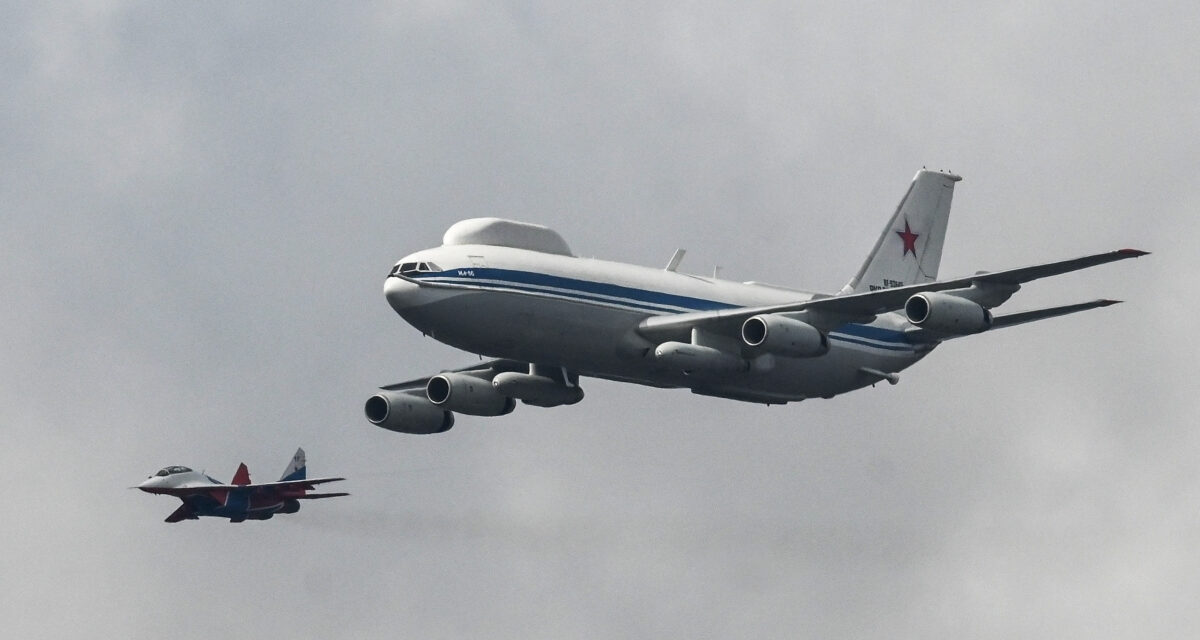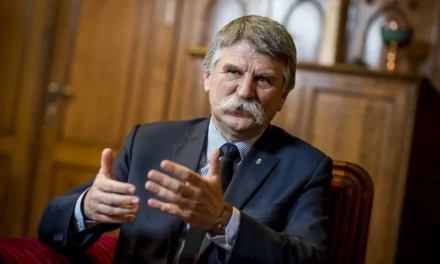The longer the Biden administration drags out the war in Ukraine and the more it helps the Ukrainian armed forces to achieve tactical victories, the greater the chance that Putin will reach for Russia's nuclear arsenal, writes David Pyne in his article published on The National Interest.
Many respected national security experts, including former Deputy Defense Secretary Graham Allison, CIA Director William Burns, and Director of National Intelligence Avril Haines, are sounding the alarm that the Biden administration is waging an undeclared proxy war against Russia, and that significantly increases the chance that Putin will resort to the use of tactical nuclear weapons in Ukraine.

Photo: David T. Pyne's Facebook page
Allison estimated that if the Ukrainian armed forces successfully recapture a significant portion of Russian-held Ukrainian territory, the chance that Putin will resort to tactical nuclear weapons increases to about 75 percent. Burns and Haines, for their part, warned that Putin could use the nuclear option if the results of the Russian military forces fall significantly short of the goals set or there is a possibility of defeat. Given that the Biden administration's stated goal of arming Ukraine is to make Russia lose the war, US policy appears to increase the risk of Putin raising the stakes to the nuclear level.
Joe Biden recently acknowledged that his administration's policies have left Putin with no viable face-saving exit strategy, and he's trying to change that. Needless to say, a nuclear war would be a colossal failure of US and NATO policy, which essentially
He has so far provided Ukraine with a "blank check" of billions of dollars in military aid so that the Ukrainians would wage a perpetual war with Russia.
After Russia pulled out of northern and northeastern Ukraine early last month, many military analysts predicted that Putin would try to win a military victory in the Donbass battle, then declare a ceasefire and end the war before Russia's May 9 Victory Day parade.
However, the Russian army did not stick to the predicted deadline; In his Victory Day speech, Putin did not declare war on Ukraine, nor did he mobilize the Russian military industry or the almost two million reservists. While it remains likely that the Russian president will engage in limited military mobilization to achieve his military goals, including seizing the rest of eastern Ukraine's Donbass region, if successful, he could order the military to launch a further offensive along the Black Sea coast, targeting the key Ukrainian port city, Odessa. That would directly link Russia to the Russian-backed Transnistrian separatist republic in eastern Moldova, at least according to a plan recently disclosed by a Russian general.
After Ukraine again rejected Russia's peace offer last month, Putin appears to have reverted to "Plan B" and is now preparing to annex Kherson County, bordering Crimea, before the end of the war. In fact, Kherson's Russian-appointed leader has already submitted a petition for unification with the motherland, which he sought to legitimize by calling for a referendum. According to earlier reports, Russia intends to pursue a similar strategy in the Donbass.
But what would Putin's reaction be if the Ukrainians managed to recapture Kherson or the Donbas during a counterattack?
In such circumstances, he can resort to tactical nuclear weapons instead of losing face, and if Russian territory - for the first time since the Second World War - came under foreign occupation, it would certainly be a considerable loss of face.
A senior US intelligence official has speculated that General Valery Gerasimov, the chief of staff of the Russian Armed Forces, recently visited Russian troops in Ukraine to brief Russian generals on the possible future use of nuclear weapons. In accordance with the Russian military doctrine - "escalate for the sake of de-escalation" - Putin may authorize the use of tactical nuclear weapons in Ukraine, as a demonstration.
Russia has already deployed a number of dual-use nuclear delivery systems – such as the 9K720 Iskander-M short-range ballistic missile (SRBM), the Kh-47M2 Kinzhal hypersonic air-launched ballistic missile (ALBM), the 3M-54 Kalibr cruise missile, Kh -101 Raduga air-launched cruise missiles, 2S7 Pion 203 mm self-propelled artillery and 2S4 Tyulpan 240 mm self-propelled heavy mortar - for attacking Ukrainian targets. Thus, it is very possible that Russia is preparing to use its tactical nuclear weapons without prior warning to the United States or NATO, let alone the Ukrainian leadership.
Meanwhile, as Peter Pry has observed, Russia's strategic nuclear forces have been on high alert and "special combat duty" since February 27 — the equivalent of DEFCON 2 or DEFCON 3 within the United States. Thus, Russia could launch all of its intercontinental ballistic missiles within minutes in the unlikely event that the US responded with a limited nuclear retaliatory strike against Russia.
While Biden has publicly suggested that Putin is bluffing when he threatens to use nuclear weapons, he appears to see those threats as increasingly credible as the US raised its own nuclear alert status for the first time since the Russian occupation.
Both of the United States' E-6B Mercury TACAMO-Looking Glass aircraft are already in the air, as well as the country's Air Strategic Command plane; these could be used to transmit nuclear launch orders if Biden were to authorize the use of nuclear weapons against Russia, or if the US Strategic Command's Global Operations Center were destroyed or otherwise incapacitated.
Speculations on how Putin might use nuclear weapons in Ukraine
One possibility is that Russia conducts low-range nuclear electromagnetic pulse (EMP) detonations over Kiev, shutting down all electronic equipment, communications, and transportation. While not directly killing civilians, such a nuclear EMP attack would – for obvious reasons – still trigger a humanitarian disaster.
Russia may deploy one or more of its estimated 2,500 EMP weapons in uninhabited areas of the Donbass region to break Ukrainian military resistance. If Ukraine refuses to capitulate after nuclear attacks, Putin can threaten to use his nuclear arsenal to physically destroy part or all of a major Ukrainian city – as the US did with Hiroshima and Nagasaki during World War II – unless Russian conditions capitulate swiftly according to
But how can NATO respond to a nuclear strike on Ukraine?
Given that Ukraine is not a NATO member state, the claim for collective defense contained in Article V cannot be invoked, but even if it were a member, all thirty NATO member states would have to vote for direct military action against Russia. But that would be highly unlikely because NATO would fear that Russia might retaliate on its member states, or that the escalation could even escalate to a full-scale nuclear war between the United States / NATO and the Russian Federation.
Therefore, Russia's use of tactical nuclear weapons in Ukraine, far from uniting NATO in a direct military response against Russia, may actually have the opposite effect and create further division, which would serve to defuse the Russo-Ukraine war as quickly as possible, avoiding the Russian nuclear strikes.
The use of some tactical nuclear weapons could prove to be Putin's "trump card" for Russia to win an overwhelming military victory, force Ukraine to surrender unconditionally, and force a change of government more acceptable to Moscow. Such a victory could potentially restore Russian prestige to near-Cold War levels and allow Russia to pressure former Soviet republics to accept their status in the Russian sphere of influence.
The longer the Biden administration drags out the war in Ukraine and the more it helps the Ukrainian armed forces achieve tactical victories, the greater the chance that Putin will reach for Russia's nuclear arsenal.
This sobering realization could prompt the Biden administration to reconsider the wisdom of pursuing this dangerous and highly risky strategy of helping the Ukrainians with massive arms shipments to “defeat” Russia. And this should spur the administration's senior leadership to consider how to encourage both Russia and Ukraine to seek a mutually acceptable, negotiated peace agreement to end the war as soon as possible.
As part of the peace deal, Ukraine would agree to permanent neutrality to satisfy Russian security concerns - see NATO accession - in return, Russia would have to agree to withdraw all its troops from Ukrainian territory (except Donbass and Crimea), and then, in an internationally controlled referendum, The people of Donbass could decide what they want. Reunify with Russia or remain under Ukrainian rule? Such an agreement would serve the permanent, stable independence of Ukraine, and then diplomatic and trade relations with Russia could be gradually normalized.
Finally, the above could be followed by a mutual security agreement that removes Western NATO forces from Eastern Europe in exchange for a full Russian military withdrawal from Belarus and Ukraine, effectively restoring the pre-2016 status quo. These steps would greatly reduce the risk of a future conflict with Russia, while helping to neutralize Putin's military alliance with China.
Featured image: MAKSIM BLINOV / SPUTNIK / SPUTNIK VIA AF












